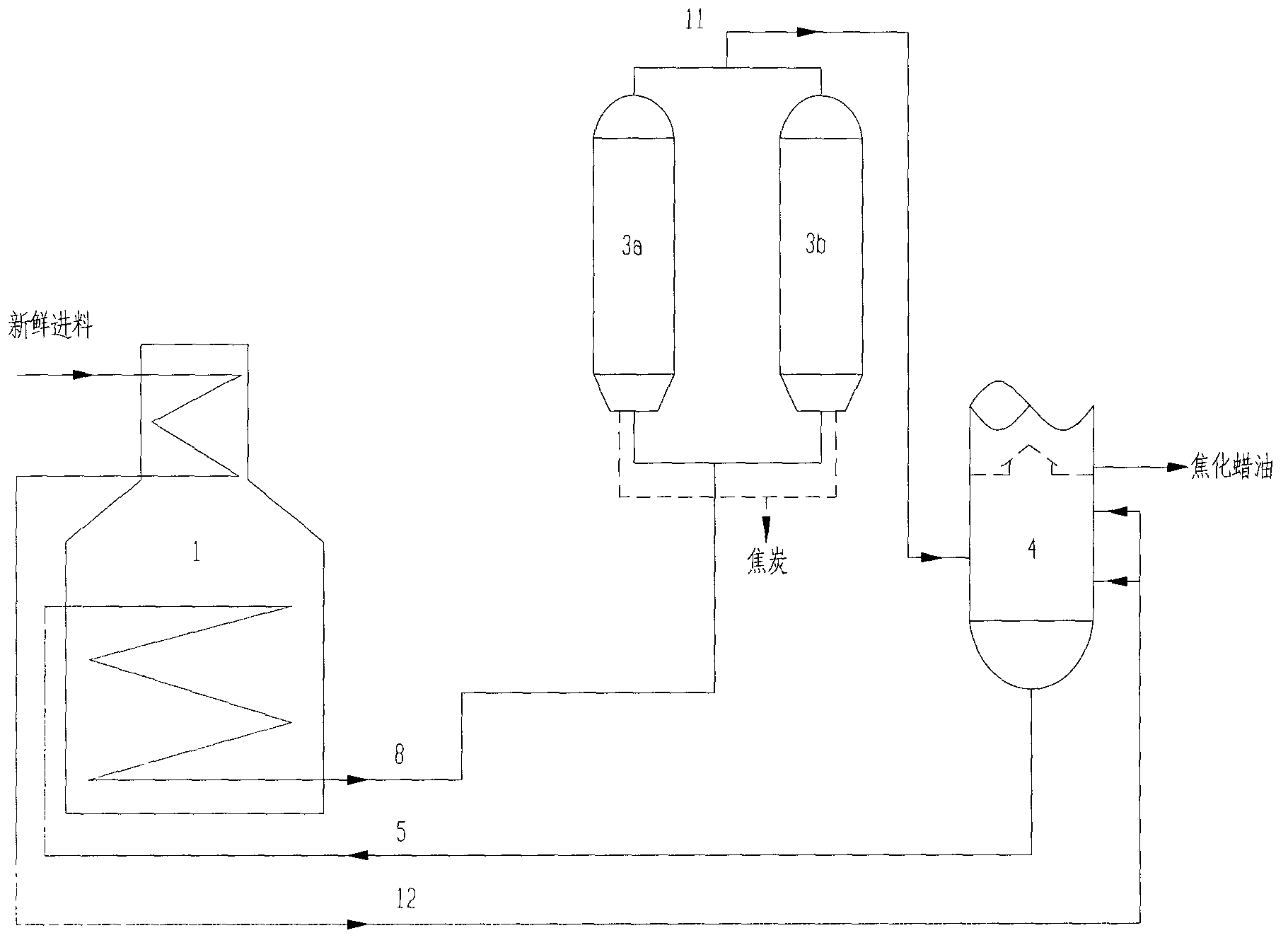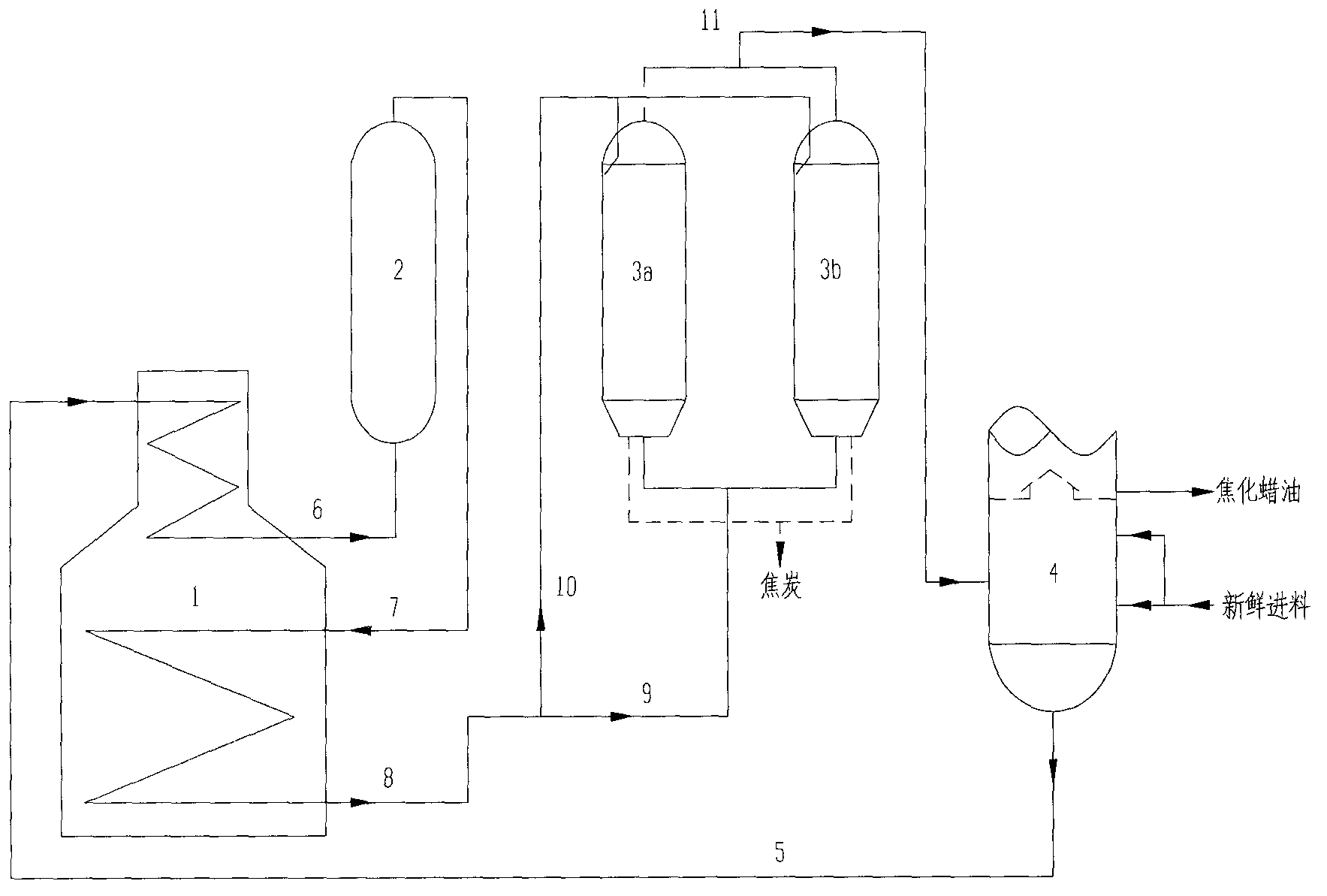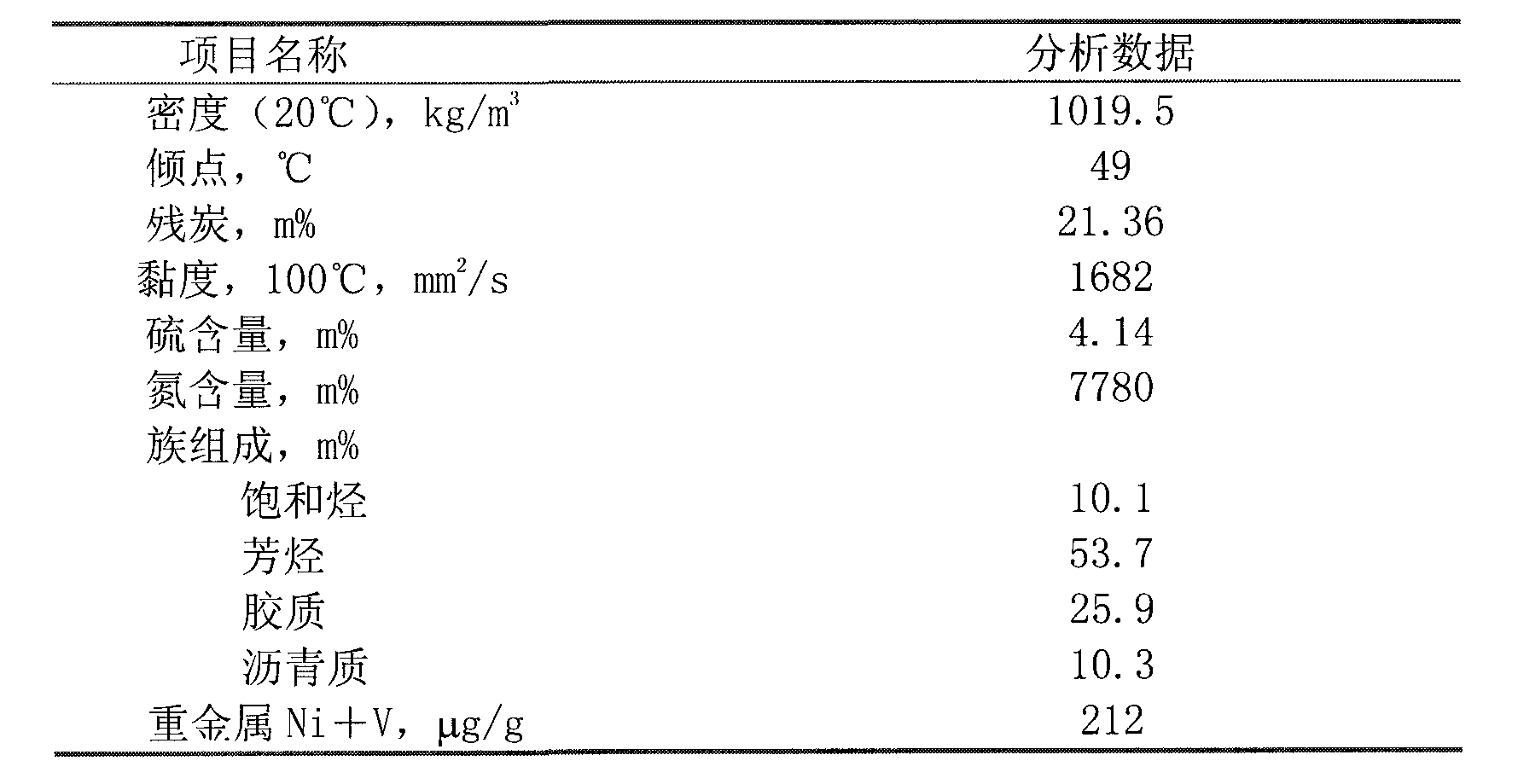Heavy oil processing method
A processing method and heavy oil technology, which are applied in the multi-stage series-connected refining and cracking process treatment, etc., can solve the problems of low liquid yield, high investment and energy consumption, and achieve the effects of simple processing flow, low investment and improved heat transfer efficiency.
- Summary
- Abstract
- Description
- Claims
- Application Information
AI Technical Summary
Problems solved by technology
Method used
Image
Examples
Embodiment 1
[0036] according to figure 2 As shown in the process flow, the lower part of the feed heavy oil I (listed in Table 1) at 280 ° C is decoked and fractionated. The lower part of the fractionation tower 4 washes and exchanges heat with the high-temperature oil and gas from the coke tower, and the mixed oil (heavy oil + circulation) at the bottom of the fractionation tower is discharged. Oil) enters the convection section of the coking heating furnace 1 for heating, injects 0.74% (accounting for the amount of heavy oil, the same below) steam in this section of the furnace tube, controls the temperature of the material at the outlet of the section of the furnace tube to be 400 ° C, and then enters the upstream Type shallow thermal cracking reactor 2 stays at a gauge pressure of 2.5 MPa for 62.5 minutes to carry out shallow thermal cracking reaction.
[0037] The mixed material from the shallow thermal cracking reactor is returned to the radiant section of the coking heating furnac...
Embodiment 2
[0049] This example mainly investigates the change of properties of heavy oil I before and after shallow thermal cracking.
[0050] The conditions of the shallow thermal cracking reaction are the same as in Example 1, but the feed to the shallow thermal cracking reactor does not include circulating oil. The mixed oil and gas after the shallow thermal cracking reaction of the heavy oil I is cooled, separated and analyzed. The product distribution and the main properties of the heavy oil produced by the shallow thermal cracking reaction are listed in Table 4.
[0051] Comparing Table 1 and Table 4, it can be seen that the viscosity of heavy oil produced by shallow thermal cracking reaction is significantly reduced, the viscosity reduction rate at 100°C is 74.13%, the distillation range becomes lighter, and the yield of gas and gasoline fractions below 180°C accounts for more 1.56% and 3.92% of the feed, improving the feed properties of the radiant section of the heating furnace....
Embodiment 3
[0055] Investigation on coking tendency of heavy oil and its shallow thermal cracking in heating furnace tube.
[0056] Test principle: The traditional thermal scaling method (temperature difference method) is used to evaluate the coking tendency of heavy oil in the heating furnace tube. After the fluid passes through the coke scale test tube, the temperature decreases accordingly to investigate the coking tendency of heavy oil.
[0057] Test method: At the beginning of the test, the raw material oil is drawn out from the raw material tank with a pump, and input into the coke scale test tube. Control the temperature of the heating furnace to be constant, and keep the flow rate of the raw oil and the temperature of the raw oil at the inlet of the test tube constant throughout the test. At the beginning of the test, there is no fouling in the coke scale test tube, the total thermal resistance is the smallest, and the heat transferred to the fluid by the heating furnace is the m...
PUM
 Login to View More
Login to View More Abstract
Description
Claims
Application Information
 Login to View More
Login to View More - R&D
- Intellectual Property
- Life Sciences
- Materials
- Tech Scout
- Unparalleled Data Quality
- Higher Quality Content
- 60% Fewer Hallucinations
Browse by: Latest US Patents, China's latest patents, Technical Efficacy Thesaurus, Application Domain, Technology Topic, Popular Technical Reports.
© 2025 PatSnap. All rights reserved.Legal|Privacy policy|Modern Slavery Act Transparency Statement|Sitemap|About US| Contact US: help@patsnap.com



